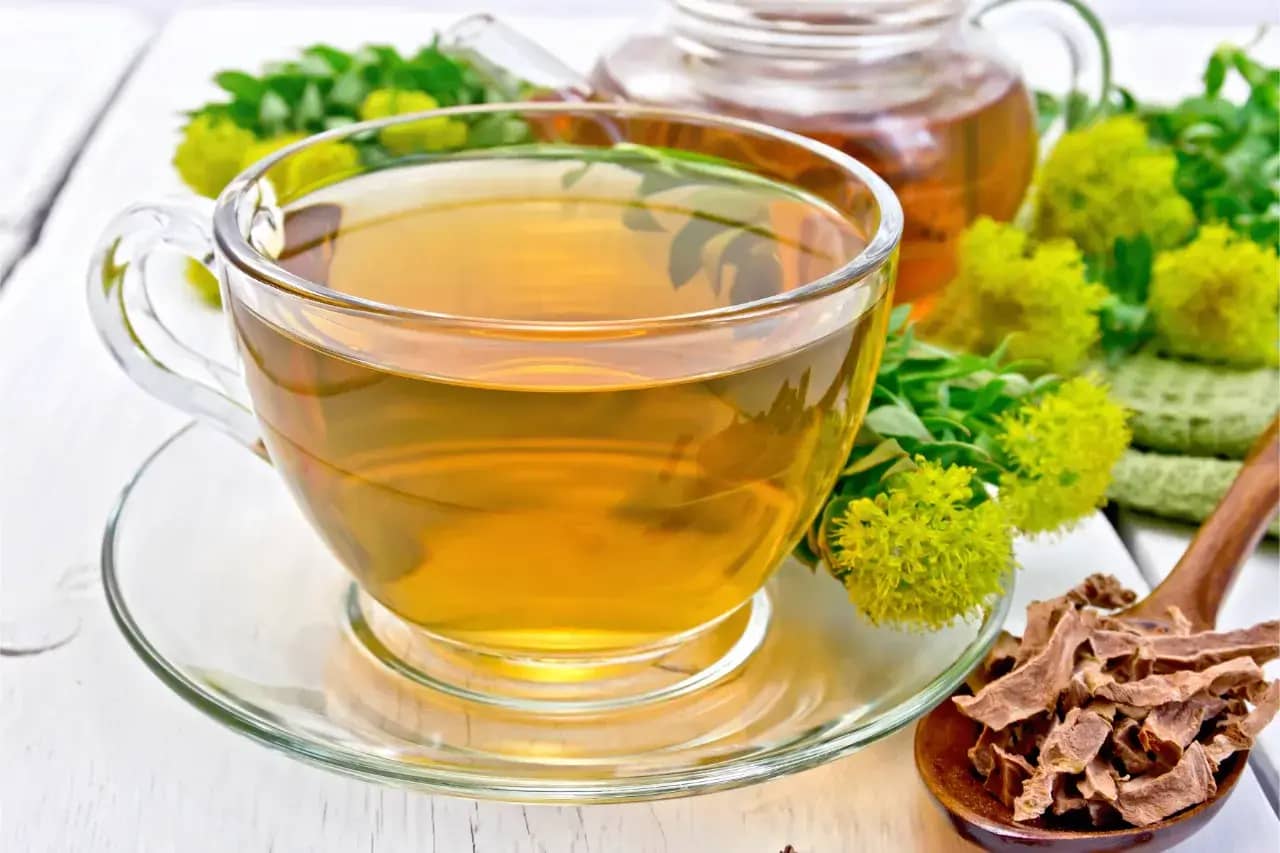Yellow Root Tea or Yellow Tea: 7 Powerful Reasons to Choose
When it comes to herbal beverages, yellow root tea and yellow tea are two popular options that offer unique flavors and health benefits. While their names may sound similar, these two teas come from different plants and have distinct characteristics. In this article, we’ll explore the differences between yellow root tea and yellow tea, including their health benefits and brewing methods.
Understanding Yellow Root Tea
What is Yellow Root Tea?
Yellow root tea is made from the root of the Hydrastis canadensis plant, commonly known as goldenseal. This perennial herb is native to North America, particularly in the eastern United States and Canada. The plant features a vibrant yellow rhizome, which is dried and used to brew tea.
Health Benefits of Yellow Root Tea
- Supports Digestive Health
One of the most notable health benefits of yellow root tea is its ability to support digestion. It has been traditionally used to relieve digestive issues, such as bloating and gas. The active compounds in yellow root may help stimulate bile production, enhancing fat digestion and nutrient absorption. - Boosts Immune Function
Yellow root tea is known for its immune-boosting properties. The tea contains berberine, which exhibits antimicrobial effects that can help protect against infections. Regular consumption of yellow root tea may improve your body’s ability to fight off common colds and illnesses. - Anti-Inflammatory Properties
Chronic inflammation is linked to various health problems, including heart disease and autoimmune disorders. The anti-inflammatory properties of yellow root tea may help reduce inflammation in the body, supporting joint health and alleviating symptoms of inflammatory conditions. - Promotes Healthy Skin
Yellow root tea can benefit your skin as well. The antioxidants in the tea help combat free radicals that contribute to skin aging. Additionally, its anti-inflammatory properties can soothe skin irritations and promote a clearer complexion. - Aids in Weight Management
If you’re looking to manage your weight, yellow root tea may offer some advantages. Its digestive support and potential appetite-suppressing effects can aid in maintaining a balanced diet and resisting unhealthy snacks.

Understanding Yellow Tea
What is Yellow Tea?
Yellow tea is a traditional Chinese tea that undergoes a unique processing method, resulting in its distinctive color and flavor. It is produced primarily in China, and the leaves are minimally oxidized, giving it a subtle and refined taste.
Health Benefits of Yellow Tea
- Rich in Antioxidants
Yellow tea is packed with antioxidants, particularly polyphenols, which help protect the body from oxidative stress and may reduce the risk of chronic diseases. - Supports Heart Health
Drinking yellow tea regularly may improve cardiovascular health by lowering bad cholesterol levels and promoting healthy blood circulation. - Enhances Mental Clarity
Yellow tea can also help improve mental clarity and focus, making it a great option for those looking to boost their cognitive function.
How to Brew Yellow Root Tea
Brewing yellow root tea is straightforward and requires just a few steps. Here’s how to prepare it:
Ingredients Needed
- Dried yellow root: 1-2 teaspoons per cup
- Water: 1 cup (about 240ml)
Brewing Instructions
- Boil Water: Heat the water in a kettle until it reaches a rolling boil.
- Add Yellow Root: Place the dried yellow root in a teapot or infuser.
- Pour Water: Once the water is boiling, pour it over the yellow root. Let it steep for about 10-15 minutes.
- Strain and Serve: Strain the tea into your cup and enjoy it hot, or let it cool for iced tea.
How to Brew Yellow Tea

Brewing yellow tea is also simple and can enhance your tea-drinking experience. Here’s how to do it:
Ingredients Needed
- Yellow tea leaves: 2-3 teaspoons per cup
- Water: 1 cup (about 240ml)
Brewing Instructions
- Boil Water: Heat water until boiling, then let it cool slightly to about 80°C (176°F).
- Add Tea Leaves: Place the yellow tea leaves in a teapot or infuser.
- Pour Water: Pour the cooled water over the leaves and steep for 3-5 minutes.
- Strain and Serve: Strain the tea into your cup and enjoy.
Flavor Comparison
Yellow Root Tea
Yellow root tea has a robust and slightly bitter flavor, often complemented with honey or lemon to balance the taste. Its unique taste is characteristic of herbal teas, making it a distinctive choice.
Yellow Tea
Yellow tea, on the other hand, has a lighter and sweeter flavor profile, making it smooth and enjoyable to drink without any additives. Its delicate taste is often appreciated by tea enthusiasts.
Conclusion
Both yellow root tea and yellow tea offer distinct flavors and health benefits. Yellow root tea is renowned for its digestive support and immune-boosting properties, while yellow tea is celebrated for its rich antioxidant content and heart health benefits. Understanding the differences between these two types of tea can help you choose the right one for your preferences and health goals.
Whether you’re seeking the medicinal qualities of yellow root tea or the refined taste of yellow tea, both options are valuable additions to your herbal tea collection. Experiment with brewing methods and flavors to find the perfect cup for your enjoyment.










